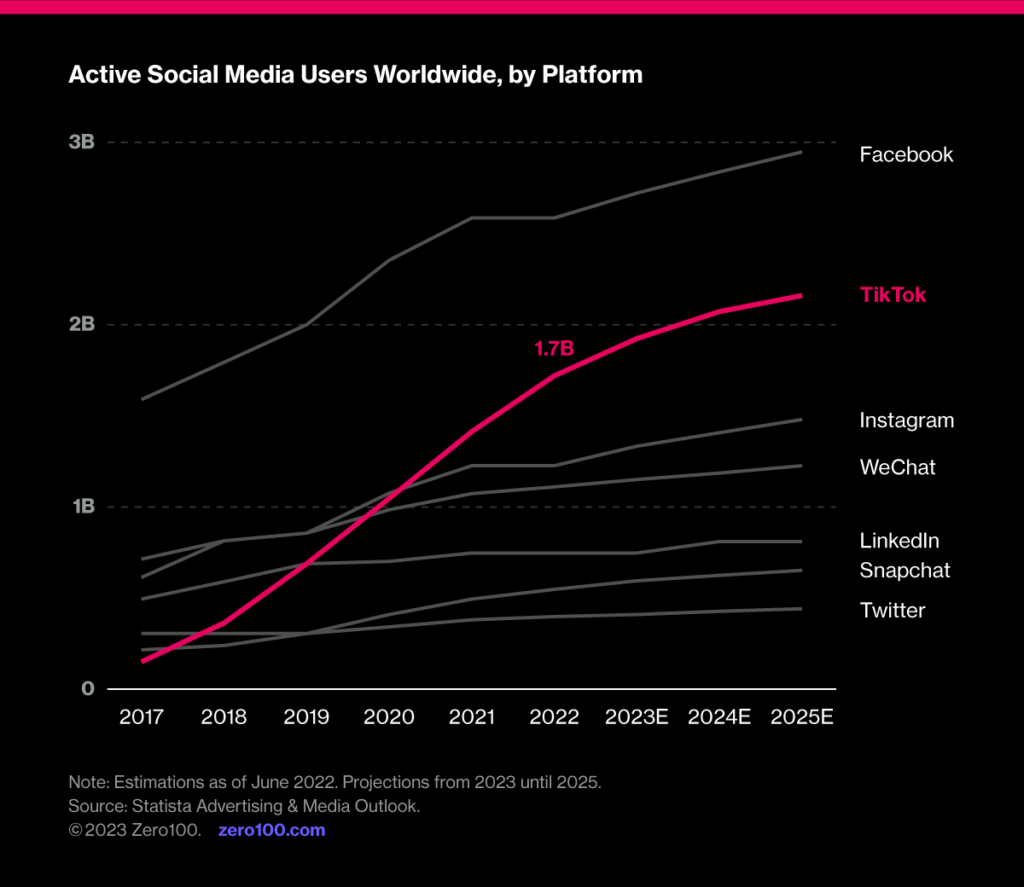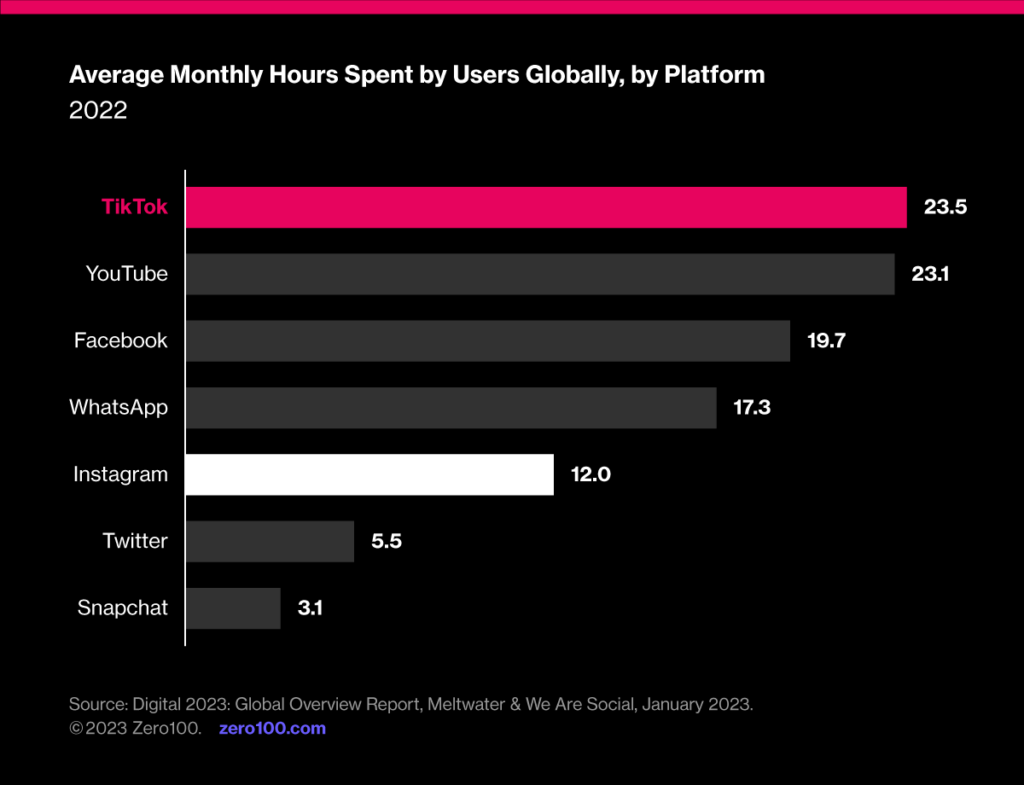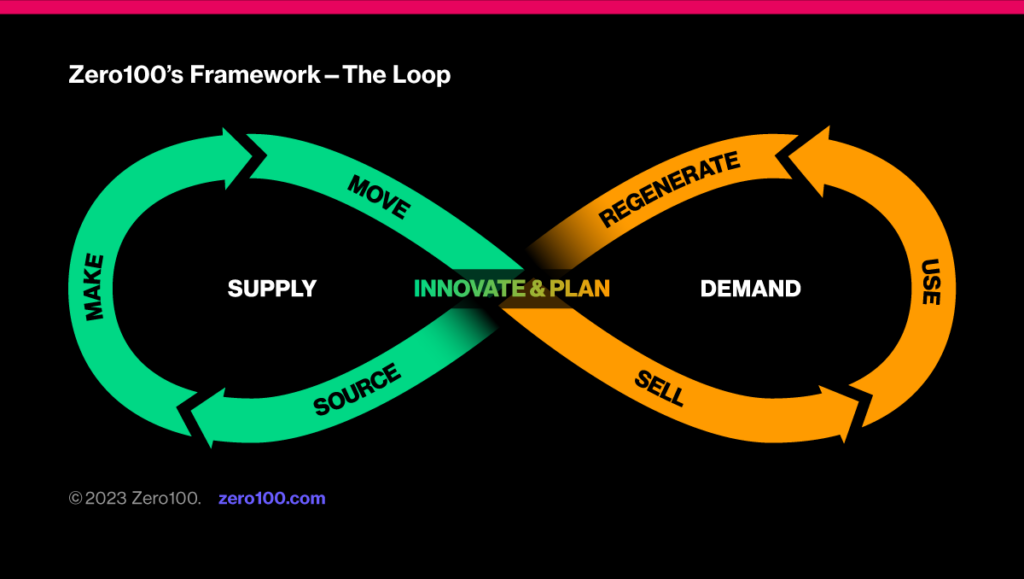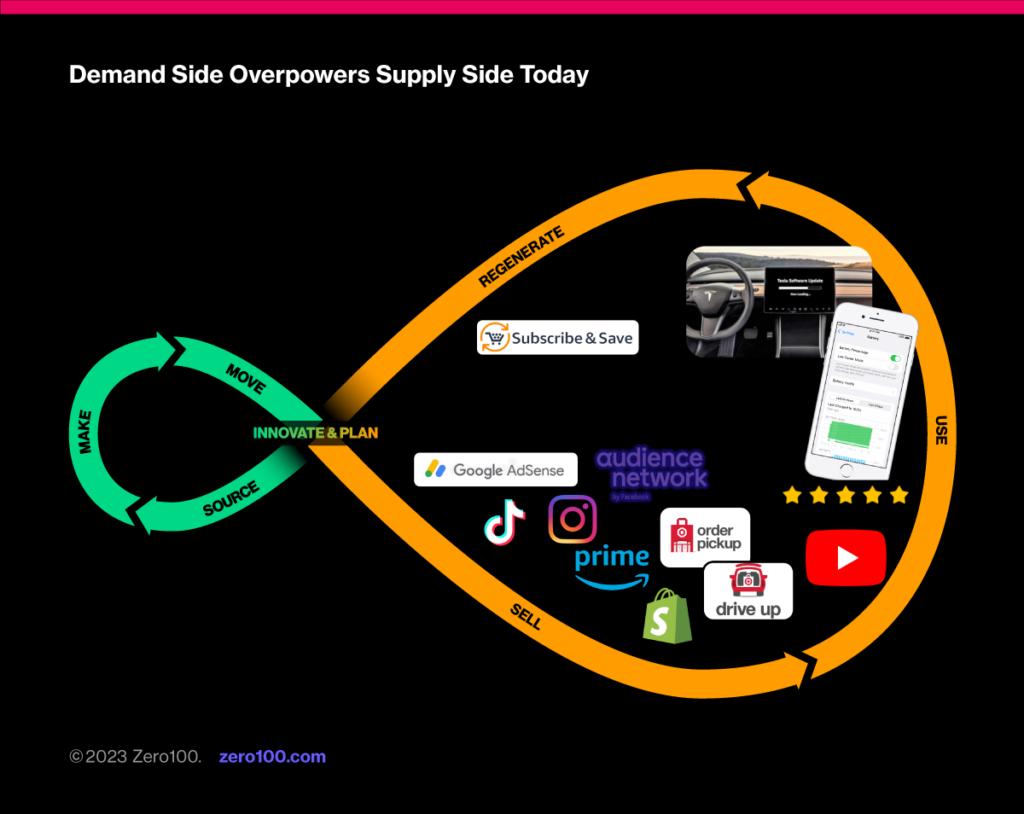What does TikTok have to do with supply chain? A lot, actually. TikTok’s viral acceleration of trends is a prime example of the off-balance Supply & Demand Loop, with the digitally bolstered Demand side putting pressure on the Supply side. To address this imbalance, supply chains must evolve to ingest real-time demand data and find ways to respond with hyper-agility.
Why am I writing about TikTok and supply chain? This isn’t just about TikTok or social media, but various digital demand signals that any company, whether customer-facing or B2B, needs to tap into to strengthen their supply chain for increasingly volatile digital demand. Without a video of me dancing to the latest Doja Cat song, I figured the TikTok Supply Chain title would get your attention.
The app that features short videos of pranks, cats, and dancing trends has become one of the most popular social media platforms on the planet, with the second most active users globally, after Facebook. And hashtags #manufacturing and #supplychain already have billions and millions of views on the platform, respectively.

And TikTok is commanding more attention than any other social media platform (Twitter copycat Threads is getting buzz, but the impact is yet to be seen.) A survey showed that active users spend an entire 24-hour day on TikTok every month, double the hours spent on Instagram. People reported they spend about 46 minutes a day on TikTok, but TikTok’s own stats from last year are even more dramatic: users spend an hour and 25 minutes a day on the platform. They open the app 17 times a day to swipe through a stream of videos that are often just 20-30 seconds long.

Every time you use it, TikTok becomes more powerful, especially as a sales tool. The New York Times said that if you “give any social media platform long enough, it will turn into a mall.” And that’s what TikTok has done, so much so that the phrase “TikTok made me buy it” is common in videos and spoken among friends. TikTok is a driver of viral product sales, which can either be a headache or an opportunity for supply chains.
UNDER PRESSURE
The Supply & Demand Loop is out of balance
We talk about the Loop as a way to depict the supply chain functions. Planning lives at the center and connects the supply chain of source-make-move to the demand chain of sell-use-regenerate, ideally flowing back into sourcing.

But we don’t see a balanced loop, as shown above. In our Zero100 survey of supply chain professionals, we found that two of three believe digital tech has shifted the balance of power to favor the Demand side over the Supply side.
This makes sense if you think about how tech has revolutionized, reinvented, and grown the demand chain over the past two decades: the Sell function has been reinvented with digital ads, fueled by social media, and e-commerce and omnichannel retail. Even the Use function has been digitally transformed with YouTube videos, a 5-star rating and review ecosystem, software updates, and product upgrades.
All this leads to an imbalance that puts additional pressure on supply chain.

DEFINING THE TIKTOK SUPPLY CHAIN
Zero100’s answer to this imbalance is to develop the capabilities of a TikTok Supply Chain.
A TikTok Supply Chain ingests and analyzes demand data from social media and various digital platforms, utilizing these insights to:
- Enable real-time re-planning to manage viral-amplified demand changes,
- Embed responsiveness into operations via nimble logistics and hyper-agile manufacturing, and
- Own their supply chain story across digital platforms to shape demand.
DESIGNING YOUR TIKTOK SUPPLY CHAIN
1. Ingest and Analyze Demand Data
The first step is to ensure that your supply chain team is connected to the data. Today, access to the data may be within the marketing team or an insights team, only reaching your inbox in quarterly reports. Find a way to plug into the data coming from live digital demand signals so that your team can conduct your own analysis and be better informed for the following steps.
2. Enable Real-Time Re-Planning
This means ingesting real-time social insights and turning them into something valuable you can act on. Planning teams can ingest real-time social insights and feedback to design product updates and fixes. Track hotspots of consumer interest and transfer inventory closer to areas of viral interest.
Real-world examples:
- Hyper-local Nike stores replace 25% of their footwear every two weeks, drawing on digital insights from consumers in the neighborhood
- Caterpillar use e-commerce and QR codes to increase the sale of parts
3. Embed Responsiveness into Operations
Next, redesign manufacturing capabilities in order to respond in a hyper-agile way to social-amplified volatility. This means investing in dynamic manufacturing that responds to digital signals where production can be ramped up or down based on trending demand chain signals. Modularize production to allow for end-stage substitutions, modifications, and customization that respond to consumer interest trends.
Real-world examples:
- Prose creates custom formulas for haircare via a DTC model
- Hilos 3D printed shoes for faster, local production
- John Deere is using additive manufacturing for engine parts, enabling replacements on demand
4. Own Your Supply Chain Story
Finally, utilize supply chain storytelling to maximize value. We aren’t advising that you jump on TikTok and do a dance. But partnering with your communications and marketing teams can help advance your supply chain goals.
- Highlight successes and learnings to showcase in order to promote brand reputation and growth
- Help keep sustainability messaging honest and precise
- Use consumer messaging to promote supply chain sustainability actions like increasing repair, return, or recycling rates
COMING UP
The rising power of Gen Z
Why is this all so critical? Gen Z is an increasingly important demographic in terms of both their spending power and their values regarding sustainability.
I spoke with Nicole Loher, Climate Communications Strategist and Adjunct Professor at NYU and FIT (plus an influencer herself), about the growing importance of sustainability communications, Gen Z, and leveraging social media for supply chains.
Nicole shared that Gen Z is extremely online in a way that’s vastly different than previous generations.
Most of Gen Z use social media for shopping searches (rather than traditional search engines), and the majority will only buy from brands they believe in, which impacts their shopping patterns.
This speaks to the value of TikTok Supply Chains. We need to listen to digital demands and online conversations, respond faster with our supply chain capabilities, and communicate back to the public in the format and on the platforms they frequently use. Nicole shared that, like influencers, brands and supply chains need to find ways to communicate authentically, sharing an honest look about their sustainability efforts and being vulnerable when there’s still work to be done.
KEY TAKEAWAYS
How to build your TikTok Supply Chain
Ingest and analyze demand data
Find a way to plug into the data coming from digital demand signals so that your team can conduct your own analysis and be better informed for the following steps.
Enable real-time re-planning
Consume real-time digital demand insights to update planning faster and develop capabilities to respond to shifting needs.
Embed responsiveness into operations
Redesign manufacturing capabilities for hyper-agility, enabling end-stage substitutions, modifications, and customization that respond to consumer interest trends.
Own your supply chain story
Partner with your communications and marketing teams to advance your supply chain goals, especially to bring consumers into sustainable practices and solutions.
Check out my full interview with Nicole Loher and Zero100's VP of Research, Matt Davis:
About the Author

Mike Silverman
Research Director, Zero100
Mike Silverman is a Research Director at Zero100, creating research and content for our community. A former journalism nerd and recovering management consultant, he found his groove doing research and content at L2 and with Scott Galloway. He also led the DTC Labs data-driven strategy practice at Barbarian, before joining the epic team at Zero100. He holds a BA from Emory University and an MBA from NYU Stern School of Business.